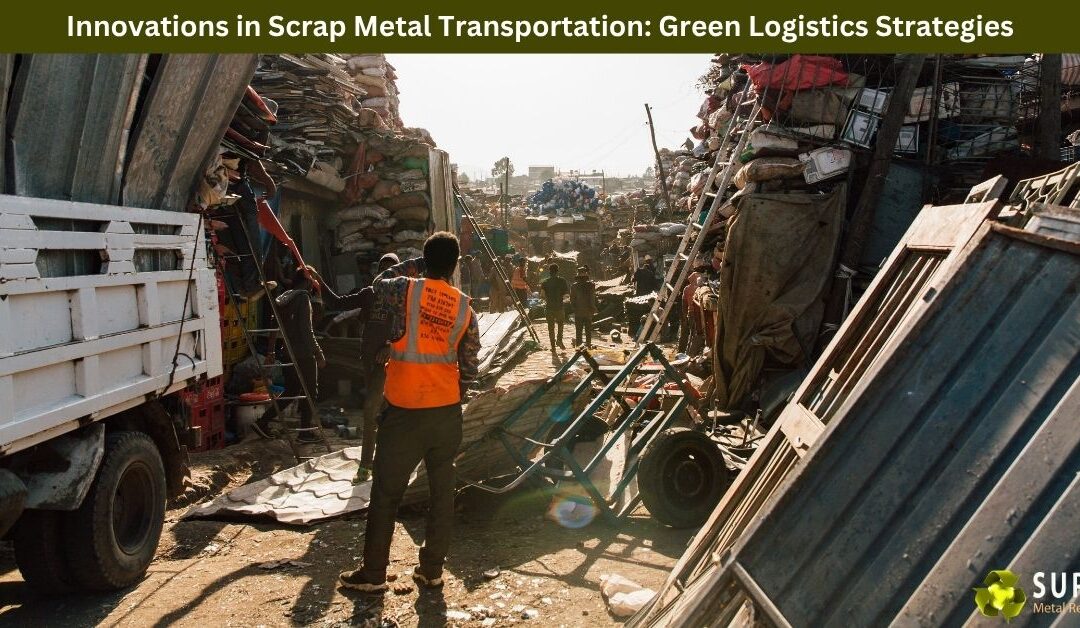When most people think about scrap metal recycling, their minds jump straight to melting furnaces and sorting machines. But there’s another piece of the puzzle that often goes unnoticed—transportation. Moving scrap metal from collection points to processing facilities might not sound glamorous, but it’s a huge part of the industry’s environmental footprint. Thankfully, a wave of innovation is changing that, making scrap metal logistics cleaner, smarter, and more sustainable.
Let’s break down how green logistics is reshaping the way we move scrap metal—and why it matters more than ever.
Why Green Logistics is a Big Deal
Here’s the thing: transporting scrap metal involves heavy-duty trucks, long distances, and often multiple trips. That adds up quickly in terms of fuel use and emissions. And as more companies aim for net-zero targets and greener operations, these emissions can no longer be ignored.
The good news? The industry is stepping up with creative, tech-driven solutions that are cutting carbon, saving fuel, and improving efficiency across the board.
Smarter Routing with Real-Time Technology
Back in the day, transporting scrap metal was mostly about guesswork—basic maps, radio calls, and manually planned routes. Fast forward to today, and things look very different.
GPS tracking, route optimization software, and real-time traffic data are now standard tools in modern scrap logistics. Companies are using apps and cloud platforms to streamline pickup routes, avoid traffic delays, and reduce unnecessary detours. Fewer kilometres driven means lower fuel costs and a smaller environmental impact.
Some scrap yards have even implemented dynamic dispatching, where trucks are routed on-the-fly based on live updates from suppliers and drivers. It’s a bit like Uber, but for metal recycling.
Electric and Low-Emission Transport Fleets
One of the most exciting trends is the move toward electric and hybrid trucks for scrap collection and delivery.
While electric heavy-duty trucks are still relatively new, some recycling companies have already started using them for short-haul urban routes. Brands like Volvo, Tesla, and Rivian are producing electric trucks that can handle substantial loads without the tailpipe emissions.
On top of that, many logistics providers are switching to biofuels or compressed natural gas (CNG) to power their fleets. These fuels emit significantly less CO₂ compared to diesel and are a solid interim solution while electric vehicle (EV) infrastructure continues to grow.
For example, a recycling company in Europe recently reported cutting its transport emissions by over 30% by switching to a biofuel blend across its scrap collection fleet.
Intermodal Transport: Trucks, Trains, and Barges Working Together
In some regions, especially where bulk scrap needs to travel long distances, companies are getting creative by combining transport modes.
Instead of relying solely on trucks, they’re using rail or barges for part of the journey. This approach—known as intermodal transport—helps lower fuel use and emissions, especially for bulk loads.
A case in point: scrap metal collected in regional Victoria might be trucked to a rail terminal, loaded onto a freight train, and then transported to a large-scale processor in Melbourne. It takes a bit more planning but can reduce emissions significantly while also cutting costs.
Smarter Bins and IoT Sensors
It’s not just about the trucks—collection points are getting smarter too.
Many recycling facilities and industrial sites are now using IoT-enabled bins and containers. These bins have sensors that monitor fill levels and send alerts when they’re ready for pickup. This means no more wasted trips to empty half-full bins, and fewer trucks on the road overall.
Plus, when you pair smart bins with route optimization, you get a logistics system that’s efficient, responsive, and environmentally friendly.
Reusable and Modular Containers
The humble scrap bin is getting an upgrade too. New modular container systems are being used that can stack neatly, fit better on transport vehicles, and be easily reused without much maintenance.
This reduces the number of trips needed, improves safety during transport, and lowers the resources required to maintain and replace containers. Some systems even include built-in weighing technology, which helps eliminate overloading and optimize truck loads.
What It Means for Our Industry
At first glance, all this tech might seem overwhelming. But here’s the key takeaway: green logistics isn’t about flipping a switch—it’s about small, smart changes that add up over time.
For metal recycling businesses, investing in more efficient routes, cleaner trucks, and smarter collection systems can lead to big cost savings while showing customers that sustainability is a real priority.
For customers and suppliers, it’s good to know that even the process of moving metal is being handled with the planet in mind.
Let’s Keep Moving in the Right Direction
Scrap metal recycling already plays a vital role in reducing waste and conserving resources. But it doesn’t stop at the yard gates. Transportation is a major part of the equation—and thanks to innovation, it’s quickly becoming cleaner and more efficient.
From AI-powered route planning to electric fleets and smart bins, the future of scrap metal logistics looks promising. It’s all about doing more with less—less fuel, fewer trips, lower emissions—without compromising service or efficiency.
Something to Think About
The next time you see a scrap truck on the road, remember—it might be running on clean energy, guided by smart software, and hauling bins that told it exactly when to show up. That’s not just recycling—it’s the future of green logistics in motion.
If you are in Braeside, and looking for a metal recycling service, this is the best way to visit us.
Super Metal Recycling
345 Frankston – Dandenong Road, Dandenong South VIC 3175
(03) 9706 4909


Recent Comments